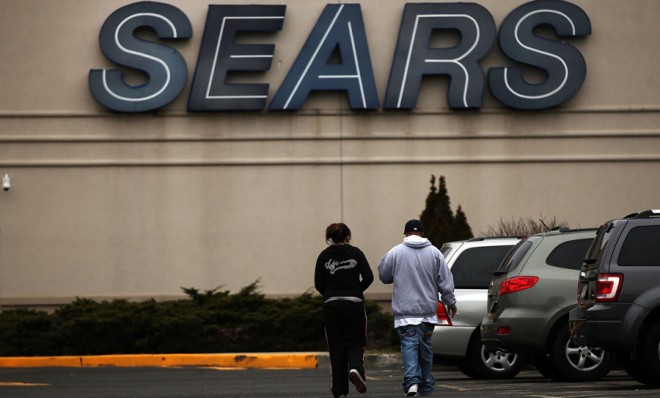Stuck in the middle with Sears
Can the iconic retailer survive the hollowing out of the middle class?

A diminishing middle-class and fumbling management could spell the end for a couple of American icons.
As consumers become segregated at the extreme ends of the income spectrum, retailers like Sears and JC Penney are getting squeezed. The unfortunate result is less choice for shoppers and two iconic retailers on the endangered list.
In America today, there's an evermore affluent group buying true luxury goods. The Nordstrom and Nieman Marcus shopper isn't looking over her shoulder at the recession anymore. The ultra-wealthy have dollars to spend. Not so on the other end of the spectrum, as more U.S. consumers find themselves with limited income and a rising cost of living. These shoppers are fueling the dollar store revolution with nearly 25,000 stores nationwide and counting.
The Week
Escape your echo chamber. Get the facts behind the news, plus analysis from multiple perspectives.

Sign up for The Week's Free Newsletters
From our morning news briefing to a weekly Good News Newsletter, get the best of The Week delivered directly to your inbox.
From our morning news briefing to a weekly Good News Newsletter, get the best of The Week delivered directly to your inbox.
Then there's Sears and Penney in the middle, fighting for the same customers. Both are middle-income department stores and iconic American retailers. Both are suffering from years of declining sales, an aging shopper base, and a dwindling middle class.
In August, Sears posted a wider than expected quarterly loss, and revenues have been in decline since 2005, when it merged with Kmart and became Sears' Holdings, under hedge fund guru Eddie Lambert's purview. Revenues decreased $596 million to $8.9 billion while sales at stores open at least a year (considered a true measure of growth for retailers) declined.
Penney's problems have been writ large in the business and mainstream media. Over the past two years, it hired a high-profile CEO, Ron Johnson, from Apple and proceeded to make so many changes so fast that the shift became unsustainable. Sales plummeted and Johnson was shown the door.
So: How can Sears and Penney survive?
A free daily email with the biggest news stories of the day – and the best features from TheWeek.com
Sears' has its hardlines — Craftsman, Kenmore, and Die Hard — around which to retreat and regroup. The idea of scaling back apparel and focusing on the product categories with equity has been suggested for years, but the company's CEO has shown little inclination to go that route. His only nod to Sears' best holdings has been to license out the brand names, add value-priced line extensions, and allow other retailers like Ace Hardware to sell Sears' branded goods.
His focus on Sears' (and Kmart's) Shop Your Way rewards program and online sales are showing some traction. Sears' online marketplace sells a little of everything and acts as a platform for other vendors in much the same way that Amazon and eBay do. It's part of what leadership calls an "integrated retail" strategy. Sales grew 20 percent in the second quarter over last year.
Sears' domestic apparel category has produced same store sales increases for eight consecutive quarters — no small feat. The home category also saw an uptick for the quarter.
Penney, on the other hand, has experienced huge declines in those two categories over the same period.
"As I've said before, we have to change the way we think about both our company and our members because our industry — like so many others — has fundamentally changed," said Sears' CEO in a recent letter to employees.
But it's not just the industry that's changed. It's the shopper too. There may well be room for Penney and Sears, just not as we all once knew them.


